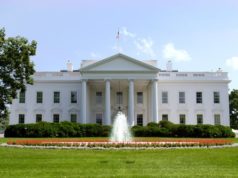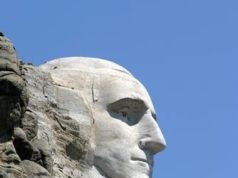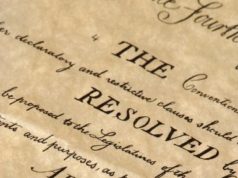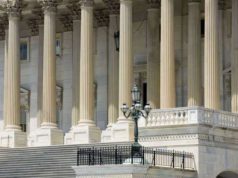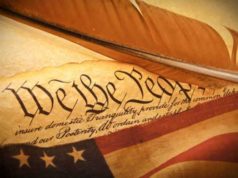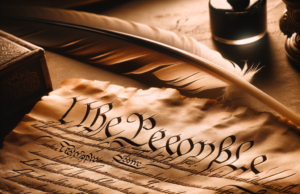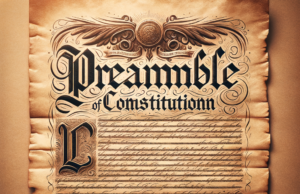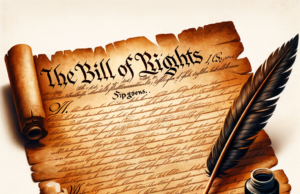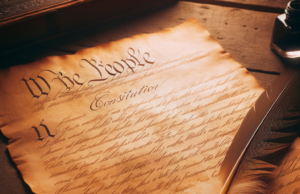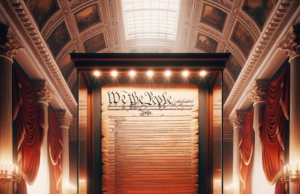Table of Contents
- 0.1 Section 1 – Legislative Powers
- 0.2 Section 2 – House of Representatives
- 0.3 Section 3 – Senate
- 0.4 Section 4 – Elections and Meetings
- 0.5 Section 5 – Membership and Procedures
- 0.6 Section 6 – Compensation and Privileges
- 0.7 Section 7 – Procedure for Passing Laws
- 0.8 Section 8 – Powers of Congress
- 0.9 Section 9 – Limits on Congress
- 0.10 Section 10 – Limits on States
- 1 Conclusion
- 2 What is Article 1 of the Constitution?
- 3 Article 1 of the Constitution: Sections
- 3.0.1 Section 2 within Article 1 of the Constitution contains 2 Clauses:
- 3.0.2 Section 3 within Article 1 of the Constitution contains 7 Clauses:
- 3.0.3 Section 4 within Article 1 of the Constitution contains 2 Clauses:
- 3.0.4 Section 5 within Article 1 of the Constitution contains 4 Clauses:
- 3.0.5 Section 6 within Article 1 of the Constitution contains 2 Clauses:
- 3.0.6 Section 7 within Article 1 of the Constitution contains 3 Clauses:
- 3.0.7 Section 8 within Article 1 of the Constitution contains 4 Clauses:
- 3.0.8 Section 10 within Article 1 of the Constitution contains 3 Clauses:
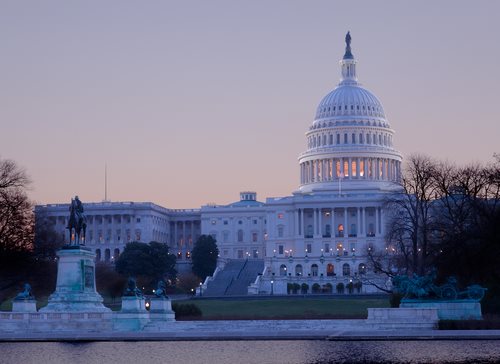
Article 1 is the first and longest article of the Constitution. It outlines the powers and structure of the legislative branch, that is, the United States Congress. Congress is composed of the Senate and the House of Representatives. This article specifies the role and responsibilities of each of these bodies and establishes rules for the passage of laws.
Section 1 – Legislative Powers
Section 1 establishes that all legislative powers belong to Congress. The Congress is made up of two bodies: the House of Representatives and the Senate. The House of Representatives serves 2-year terms and membership is based on the population of each state. The number of representatives each state has is determined by its population, as counted in the Census which takes place every ten years. The Senate, on the other hand, has two members from each state and they serve six-year terms.
Section 2 – House of Representatives
This section outlines the makeup of the House of Representatives. It states that members of the House must be at least 25 years old, be U.S. citizens for at least seven years and must live in the state they represent. The section also specifies how the representative seats will be apportioned based on census results and that the Speaker of the House is the presiding officer of the chamber. This section also allows the House to choose its own officers and establish its own rules.
Section 3 – Senate
This section lays out the structure of the Senate. It establishes that the Vice President is the President of the Senate and has no vote unless there is a tie. It sets the age limit for Senators at 30 years old and states that they must be U.S. citizens for nine years before serving. A third of the Senators’ terms expire every two years, so only a small number of Senators stand for election in a given year. The Senate also has the power to choose its own officers and establish its own rules of procedure.
Section 4 – Elections and Meetings
This section outlines the procedure for holding elections for Senators and Representatives. It also allows Congress to make regulations about the time and manner of holding elections. Furthermore, it mandates that Congress must meet at least once a year.
Section 5 – Membership and Procedures
This section establishes the qualifications and procedures regarding the composition of Congress. It specifies that each House of Congress is responsible for judging the qualifications of its members and punishes members for disorderly behavior. It also grants each House the power to regulate its own proceedings and discipline its members, including expelling them with a two-thirds vote of their colleagues.
Section 6 – Compensation and Privileges
This section establishes the compensation and privileges of members of Congress, including the fact that they earn a salary that is paid by the federal government. It specifies that they receive privileges such as immunity from arrest while attending sessions of their respective Houses, except for treason, felony, or breach of the peace. Members of Congress also cannot be held liable for what they say in Congress and cannot hold another government office while serving in Congress.
Section 7 – Procedure for Passing Laws
This section lays out the procedure for passing laws. In order for a bill to become a law, it must first be introduced in either the House or the Senate. If it passes one of these chambers, it goes to the other one for approval. Once it has passed both chambers, the bill goes to the President. If the President signs the act, it becomes law. If the President does not approve of the bill, he can veto it. However, Congress can override a veto with a two-thirds vote in both houses.
Section 8 – Powers of Congress
This is the most important section of Article 1. It lists the powers of Congress, which include the ability to:
– collect taxes and provide for the general welfare of the United States
– borrow money on the credit of the United States
– regulate commerce among the states and with foreign nations
– establish naturalization and immigration laws
– coin money and regulate its value
– establish post offices and post roads
– declare war, establish an army and navy, and make rules for the regulation of the military
– make laws that are necessary and proper for carrying out the powers of Congress
These powers are called the enumerated powers of Congress and they are used to determine what Congress can and cannot do. They help ensure that no one branch of the U.S. government has too much power.
Section 9 – Limits on Congress
This section establishes limits on the powers of Congress. For example, it states that Congress can’t pass any law that suspends the writ of habeas corpus (which means the right to go before a judge and challenge one’s detention), unless there is an emergency. It also prohibits Congress from passing bills of attainder (which means punishing someone without a trial) or ex post facto laws (which means passing laws that make an act illegal after it has been committed).
Section 10 – Limits on States
This section establishes limits on the powers of the states, as it states that no state is allowed to enter into any treaty, alliance, or confederation, nor to grant letters of marque and reprisal, which are official permits from a government to a person allowing them to attack and steal from enemy ships.
Conclusion
These are the sections of Article 1 of the U.S. Constitution in detail. Together, they form the basis of the legislative branch of the federal government in the US. Congress is responsible for making laws that affect the lives of all Americans. As you can see, the Constitution established a separation of powers between the three branches, ensuring that no one branch of the government could become too powerful. The detailed description of this Article in the Constitution embraces the philosophy of the Founding Fathers that the government must serve the people and its power must be limited by the Constitution in order to protect the citizens of the United States.
What is Article 1 of the Constitution?
Article 1 of the Constitution a section of the United States Constitution that addresses the Legislative Branch of the Federal Government; this Article establishes the process and procedures latent within the process of creating, upholding, proposing, and vetoing laws – Article 1 of the Constitution not only illustrates individual responsibility with regard to the 3 branches of the Federal Government but also their respective limitations:
Article 1 of the Constitution is one of the 7 Articles that comprise the text of the Constitution of the United States of America; in addition to the Preamble, which serves as the introduction to the Constitution, the document is comprised of 8 total components
The Constitution of the United States not only outlined a framework for a legislative system, but also an identifiable statute reflecting the legal guidelines imposed with regard to the relationship between the United States Federal Government and its collective citizens
Article 1 of the Constitution: Sections
Within Article 1 of the Constitution, there exist 10 separate sections; within each section exist individual clauses with regard to the statutes expressed:
Article 1 of the Constitution: Section I. (The Power of Legislation)
Article 1 of the Constitution: Section II. (The House of Representatives)
Section 2 within Article 1 of the Constitution contains 2 Clauses:
Clause 1, Section 2, Article 1 of the Constitution: Election Process
Clause 2, Section 2, Article 1 of the Constitution: Eligible Candidates
Clause 3, Section 2, Article 1 of the Constitution: Taxation and Polling
Clause 4, Section 2, Article 1 of the Constitution: Reappointment
Clause 5, Section 2, Article 1 of the Constitution: Structural Hierarchy and Removal from Office
Article 1 of the Constitution: Section III. (The Senate)
Section 3 within Article 1 of the Constitution contains 7 Clauses:
Clause 1, Section 3, Article 1 of the Constitution: Election Process
Clause 2, Section 3, Article 1 of the Constitution: Reappointment
Clause 3, Section 3, Article 1 of the Constitution: Eligible Candidates
Clause 4, Section 3, Article 1 of the Constitution: Voting Process
Clause 5, Section 3, Article 1 of the Constitution: Structural Hierarchy
Clause 6, Section 3, Article 1 of the Constitution: Removal from Office
Clause 7, Section 3, Article 1 of the Constitution: Punitive Recourse
Article 1 of the Constitution: Section IV. (Congressional Appointment)
Section 4 within Article 1 of the Constitution contains 2 Clauses:
Clause 1, Section 4, Article 1 of the Constitution: Organization
Clause 2, Section 4, Article 1 of the Constitution: Terms of Service
Article 1 of the Constitution: Section V. (Congressional Policy)
Section 5 within Article 1 of the Constitution contains 4 Clauses:
Clause 1, Section 5, Article 1 of the Constitution: Eligible Candidates
Clause 2, Section 5, Article 1 of the Constitution: Statutes
Clause 3, Section 5, Article 1 of the Constitution: Proceedings and Hearings
Clause 4, Section 5, Article 1 of the Constitution: Agenda
Article 1 of the Constitution: Section VI. (Civil Office Appointment)
Section 6 within Article 1 of the Constitution contains 2 Clauses:
Clause 1, Section 6, Article 1 of the Constitution: Legality and Insurance
Clause 2, Section 6, Article 1 of the Constitution: Legislative Autonomy
Article 1 of the Constitution: Section VII. (Congressional Bills)
Section 7 within Article 1 of the Constitution contains 3 Clauses:
Clause 1, Section 7, Article 1 of the Constitution: Financial Bills
Clause 2, Section 7, Article 1 of the Constitution: Passing Bills
Clause 3, Section 7, Article 1 of the Constitution: Veto Power
Article 1 of the Constitution: Section VIII. (Congressional Power)
Section 8 within Article 1 of the Constitution contains 4 Clauses:
Clause 1, Section 8, Article 1 of the Constitution: Enumeration
Clause 2, Section 8, Article 1 of the Constitution: Commercialization
Clause 3, Section 8, Article 1 of the Constitution: Supplemental Power
Clause 4, Section 8, Article 1 of the Constitution: Proper and Necessity Processes
Article 1 of the Constitution: Section IX. (Congressional Limitation)
Article 1 of the Constitution: Section X. (State Limitations)
Section 10 within Article 1 of the Constitution contains 3 Clauses:
Clause 1, Section 10, Article 1 of the Constitution: Contractual Limits
Clause 2, Section 10, Article 1 of the Constitution: Commercial Limits
Clause 3, Section 10, Article 1 of the Constitution: Limits of Allegiance







